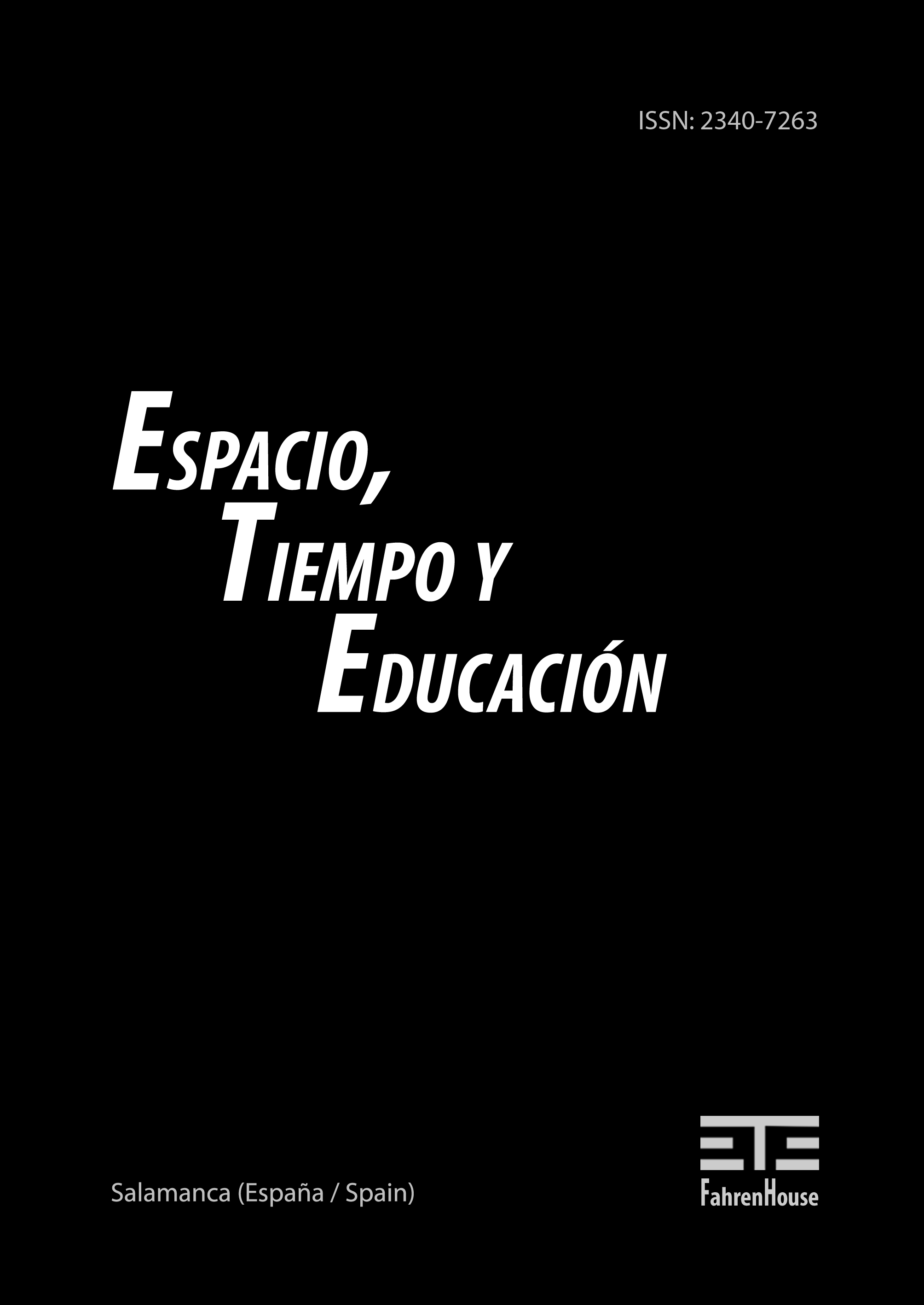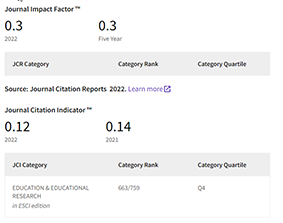Adjusting Swedish gymnastics to the female nature: Discrepancies in the gendering of girls’ physical education in the mid-nineteenth century
DOI:
https://doi.org/10.14516/ete.162Parole chiave:
Swedish gymnastics, physical education, gender, discipline, history of educationAbstract
During the nineteenth century, Swedish gymnastics became one of the main models of physical education in the Western world. The purpose of this article is to explore how Swedish gymnastics was adjusted to the female body and mind in the mid-nineteenth century. Using handbooks published by the Swedish educationalist Anton Santesson as an empirical starting point, this article shows how the relationship between gender and gymnastics was complicated and exhibited significant discrepancies. In part, Swedish gymnastics was marked by a one-sex model of gender differences, which meant that gymnastics was perceived as a method for catering to the deficiencies and weaknesses of the feminine nature, in an attempt to make girls and young women more similar to boys. Swedish gymnastics had, nevertheless, vital elements of a two-sex model, according to which gymnastics was supposed to realise the true feminine nature of girls. Following this line of thought, Santesson claimed that, since gymnastics merely followed the laws of the body, it could not make girls more like boys. Santesson’s vision of gymnastics also included disciplinary mechanisms, such as the partitioning of space, which were gender neutral. Apart from presenting insights into the ambiguous and contradictory notions of gender in Swedish girls’ gymnastics, this article thus also raises questions regarding whether other models of physical education were marked by similar discrepancies during the nineteenth century.
Riferimenti bibliografici
Annerstedt, C. (1991). Idrottslärarna och idrottsämnet: Utveckling, mål, kompetens: Ett didaktiskt perspektiv. Göteborg: Acta Universitatis Gothoburgensis.
Backman Prytz, S. (2014). Borgerlighetens döttrar och söner: Kvinnliga och manliga ideal bland läroverksungdomar, ca. 1880-1930. Uppsala: Acta Universitatis Upsaliensis.
Barker-Ruchti, N. (2006). «Stride Jump – Begin!»: Swedish Gymnastics in Victorian England. Sporting Traditions, 22(2), 13-29.
Bazoge, N., Saint-Martin, J., & Attali, M. (2013). Promoting the Swedish method of physical education throughout France for the benefit of public health (1868-1954). Scandinavian Journal of Medicine & Science in Sports, 23(2), 232-243.
Bonde, H. (2012). Projection of Male Fantasies: The Creation of ‘Scientific’ Female Gymnastics. The International Journal of the History of Sport, 29(2), 228-246.
Carli, B. (2004). The making and breaking of a female culture: The history of Swedish physical education «in a different voice». Göteborg: Göteborgs universitet.
Chisholm, A. (2005). Incarnations and Practices of Feminine Rectitude: Nineteenth-Century Gymnastics for U.S.Women. Journal of Social History, 38(3), 737-763.
Chisholm, A. (2007). The disciplinary dimensions of nineteenth-century gymnastics for US women. The International Journal of the History of Sport, 24(4), 432-479.
Fletcher, S. (1984). Women first: The female tradition in English physical education, 1880-1980. London: Athlone.
Foucault, M. (1991). Discipline and Punish: The Birth of the Prison. Harmondsworth: Penguin.
Foucault, M. (2000). Governmentality. In J. D. Faubion (Ed.), Essential works of Foucault 1954-1984: Power (pp. 201-222). New York: The New Press.
Frih, A.-K. (2007). Flickan i medicinen: Ungdom, kön och sjuklighet 1870-1930. Örebro: Örebro universitetsbibliotek.
García, R. S., & Herraiz, A. R. (2013). «Governmentality» in the origins of European female PE and sport: The Spanish case study (1883–1936). Sport, Education and Society, 18(4), 494-510.
Gigliola, G., & Terret, T. (Eds.). (2005). Sport and Education in History: Proceedings of the 8th ISHPES Congress. Sankt Augustin: Academia Verlag.
Hargreaves, J. (1994). Sporting females: Critical issues in the history and sociology of women’s sports. London: Routledge.
Kirk, D. (2000). Gender associations: Sport, state schools and Australian culture. The International Journal of the History of Sport, 17(2-3), 49-64.
Kirk, D., & Vertinsky, P. (Eds.). (2016). The female tradition in physical education: ‘Women first’ reconsidered. London: Routledge.
Laqueur, T. (1992). Making sex: Body and gender from the Greeks to Freud. Cambridge, MA: Harvard University Press.
Larsson, E. (2016). Classes in themselves and for themselves: The practice of monitorial education for different social classes in Sweden, 1820-1843. History of Education, 45(5), 511-529.
Larsson, M. (2002). Den moraliska kroppen: Tolkningar av kön och individualitet i 1800-talets populärmedicin. Hedemora: Gidlund.
Ljunggren, J. (1999). Kroppens bildning: Linggymnastikens manlighetsprojekt 1790-1914. Eslöv: Symposion.
Ljungren, J. (1996). Nation‐building, primitivism and manliness: The issue of gymnastics in Sweden around 1800. Scandinavian Journal of History, 21(2), 101-120.
Matus, J. (1995). Unstable bodies: Victorian representations of sexuality and maternity. Manchester: Manchester University Press.
McIntosh, P. C. (2007). Therapeutic Exercise in Scandinavia. In Dixon, J. G., McIntosh, P. C., Munrow, A. D., & Willetts, R. F. (Eds.), Landmarks in the history of physical education (pp. 81-106). London: Routledge & Kegan Paul.
Naul, R. (2002). History of sport and physical education in Germany, 1800-1945. In Naul, R., & Hardman, K. (Eds.), Sport and Physical Education in Germany (pp. 15-27). London: Routledge.
Pfister, G. (2009). The Role of German Turners in American Physical Education. The International Journal of the History of Sport, 26(13), 1893-1925.
Rabinbach, A. (1992). The Human Motor: Energy, Fatigue, and the Origins of Modernity. Los Angeles: University of California Press.
Rose, N. (1995). Psykologens blick. In Hultqvist, K., & Petersson, K. (Eds.), Foucault: Namnet på en modern vetenskaplig och filosofisk problematik (pp. 175-232). Stockholm: HLS.
Rose, N. (1999). Governing the Soul: The Shaping of the Private Self. London: Free Association Books.
Rose, N., & Miller, P. (1992). Political power beyond the state: Problematics of government. British Journal of Sociology, 43(2), 173-205.
Sandblad, H. (1985). Olympia och Valhalla: Idéhistoriska aspekter av den moderna idrottsrörelsens framväxt. Stockholm: Almqvist & Wiksell international.
Santesson, A. B. (1856). Handbok i pädagogisk gymnastik för gymnasier och skolor. Carlstad.
Santesson, A. B. (1859). Folkskolans gymnastik. Carlstad.
Santesson, A. B. (1864). Folkskolans gymnastik och vapenföring. Carlstad: Agne Peterssons förlag.
Santesson, A. B. (1865a). Gymnastik för unga qvinnor och skolflickor. Svenska gymnastik-föreningens tidskrift, 1(1), 127-130.
Santesson, A. B. (1865b). Om offentliga avslutningar i gymnastik. Svenska gymnastik-föreningens tidskrift, 1(1), 81-85.
Santesson, A. B. (1866a). Gymnastik för unga qvinnor och skolflickor. Stockholm: Bonnier.
Santesson, A. B. (1866b). Gymnastik för unga qvinnor och skolflickor. Svenska gymnastik-föreningens tidskrift, 2(1), 81-83.
Santesson, A. B. (1866c). Sedeförderfvet i skolorna. Svenska gymnastik-föreningens tidskrift, 2(1), 72-81.
Santesson, A. B. (1866d). Skol-gymnastik för rikets elementar-läroverk: jemte en kort skildring af disciplinens tillstånd vid flera af dessa läroverk. Stockholm: Bonnier.
Santesson, G. (1982). Släkten Santesson från Långaryd. Karlshamn: Lagerblads tryckeri.
Scott, J. W. (1986). Gender: A Useful Category of Historical Analysis. The American Historical Review, 91(5), 1053-1075.
Svalling, E. (1913). Den kvinnliga avdelningen vid Kungl. gymnastiska centralinstitutet 1864-1913 Kungl. gymnastiska centralinstitutets historia 1813-1913 (pp. 249-269). Stockholm: P. A. Norstedt & söner.
Tjeder, D. (2003). The power of character: Middle-class masculinities, 1800-1900. Stockholm: Stockholms universitet.
Trangbaek, E. (1996). Discipline and Emancipation Through Sport. Scandinavian Journal of History, 21(2), 121-134.
Vertinsky, P. (1994). The eternally wounded woman: Women, doctors, and exercise in the late nineteenth century (Illini Books ed.). Urbana, Ill: University of Illinois Press.







